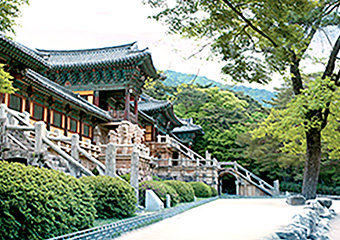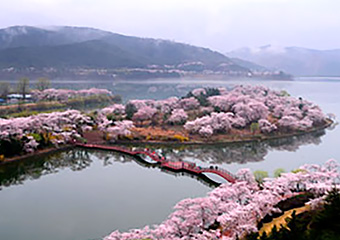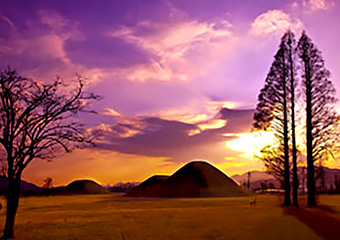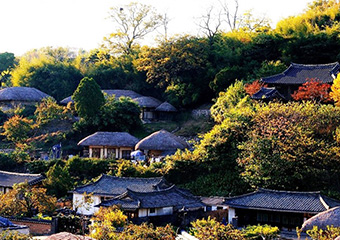

The Bulguksa zone includes Tohamsan Mountain, revered during Silla as one of the five sacred mountains that protected the kingdom. Its slopes were the site of ritualistic ceremonies during the Silla period and are still home to Bulguksa Temple and Seokguram Grotto (added to the UNESCO World Heritage list in 1995). The sites date back to the 8th century and have come to represent the epitome of Unified Silla culture.
Main Attractions
Bulguksa Temple, Gyeongju Folk Craft Village , Gyeongju Wind Power Plan, Seokguram Grotto,
Tomb of King Wonseong

A scenic man-made lake lies at the center of this zone which covers over 8.5 million square meters of beautifully landscaped land. The Bomun Tourist Complex serves as a comprehensive recreational development with luxury hotels, condotels, golf courses, and theme parks. It is also home to the Sanseong Fortress Belt, which forms part of the Gyeongju Historic Area (designated a UNESCO World Heritage Site in 2000).
Main Attractions
Bomunho Lake, East Palace Garden (Donggungwon), Gyeongju Teddy Bear Museum
Gyeongju World Amusement Park , Gyeongju World Culture Expo Park , Shilla Millennium Park
Wooyang Art Museum

Past and present coexist in downtown Gyeongju where palace grounds, burial sites, ancient ruins, and Buddhist temples can still be found among scenes of urban life. The mythology surrounding the founding monarchs of the Silla can be traced to archeological sites located throughout the area, making it a good starting point for visitors interested in tracing Silla’s history. Of the five areas that make up the Gyeongju Historic Area (designated a UNESCO World Heritage site in 2000), Wolseong (Wolseong Palace Site) Belt, Tumuli Park Belt, and Hwangnyongsa (Hwangnyongsa Temple Site) Belt are located here.
Main Attractions
Bunhwangsa Temple, Cheomseongdae Observatory, Daereungwon Tomb Complex(Cheongmachung),
Donggung Palace and Wolji Pond (formerly Anapji), Gyeongju National Museum (featuring the Divine Bell of King Seongdeok), Gyerim Forest , Hwangnyongsa Temple Site , Wolseong Palace Site

Donghae, meaning the East Sea, stretches out to include the Underwater Tomb of King Munmu who gave orders to be buried at sea so that he could come back as dragon to protect the kingdom. Other historical points of interest include the Gameunsaji Temple Site, Golgulsa Temple, and Girimsa Temple. Along the coastline, visitors can also find beaches, camping sites, seaside walking trails, sports facilities, and other recreational outlets.
Main Attractions
Gameunsaji Temple Site (featuring the famed 3-story stone pagoda), Girimsa Temple,
Golgulsa Temple , Underwater Tomb of King Munmu

Bukbu remained a vital part of the Goryeo and Joseon dynasties that followed Silla. In addition to sacred Buddhist sites, the area contains Yongdamjeong, the birthplace of the founder of Cheondoism, a native Korean religion with roots in Neo-Confucianism. Confucian culture is also on display in Yangdong Village which was named a UNESCO World Heritage site along with Andong Hahoe Village in 2010.
Main Attractions
Oksanseowon Confucian Academy, Yangdong Village , Yongdamjeong Pavilion